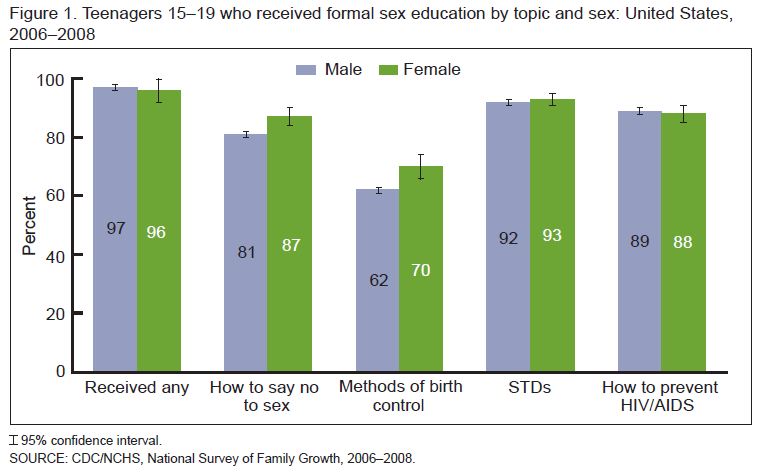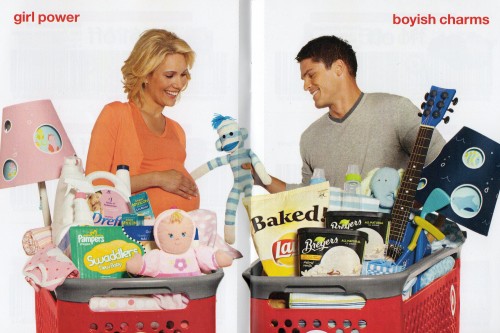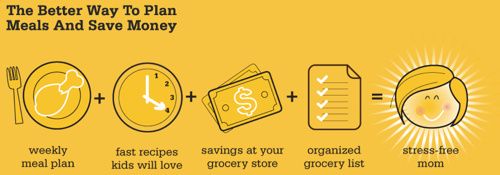Cross-posted at Jezebel.
A new report from the Centers for Disease Control (via Family Inequality) reveals that boys report less sex education than girls.
What teenagers report learning from school:

What teenagers report learning from their parents:

Compared to boys, then, girls report more guidance from school and significantly more from their parents. This probably reflects cultural ideas that boys naturally desire sex, have a positive sense of their own sexuality, and that nothing really bad can happen to them; in contrast, the risk that sex poses to girls’ reputations and the possibility of sexual violence and pregnancy often shape how educators and parents manage their emerging sexualities.
Or it might be an artifact of self-reporting. Thoughts?
See also our popular post on STI, pregnancy, and abortion rates in the U.S. versus select European countries (hint: the U.S. doesn’t come out smelling like roses).
Lisa Wade, PhD is an Associate Professor at Tulane University. She is the author of American Hookup, a book about college sexual culture; a textbook about gender; and a forthcoming introductory text: Terrible Magnificent Sociology. You can follow her on Twitter and Instagram.
















